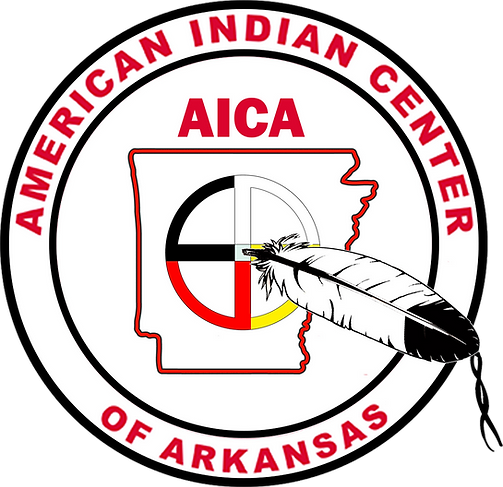The ribbon skirt, which is a symbol of womanhood amongst native communities, tells a story of adaptation and survival. Many Indigenous tribes utilize ribbon work in their designs, often for powwow regalia or pieces made for special occasions. Ribbons are sewn onto skirts, dresses, and shirts, and have a special significance to the wearer.
The history of ribbonwork by indigenous people has been documented for over 400 years. French traders brought the ribbons to the Great Lakes region in the later part of the 18th century. After the French Revolution, extravagant clothing decorated by ribbons quickly went out of style in Europe and the unwanted ribbons were exported to the Americas. Silk ribbons inspired a new, uniquely Native American art form.
The first recorded instance of ribbonwork appliqué was on a Menominee wedding dress made in 1802. Ribbonwork reached its peak in the last quarter of the 19th century, having moved out from its epicenter in the Great Lakes to several tribes in the Prairies, Plains, and Northeast. Ribbonwork appliqué initially lasted for just a century, the craft quickly dying out in the early 1900s. This time period coincided with the dislocation of many tribes from their traditional homelands and ways of life. By the 1970s, the same time as a native cultural resurgence and Indian activism, ribbonwork was again being produced by various Prairie and Plains tribes.
Ribbon Skirts are not only a distinct fashion piece to the non-indigenous eye but are also a historical and traditional form of identity among native women. Presently many women representing Tribal nations wear ribbon skirts at events for land, water and to bring about awareness for missing and murdered indigenous women.
The ribbon skirt represents a symbol of womanhood. It is an identifying piece that connects you to the earth and Grandmother moon. More recently, the ribbon skirt has been used as a form of expression of womanhood and strength. Many Indigenous groups have a strong tradition in this iconic piece of clothing, and all have adapted or created their own stories and protocol surrounding them. Let us look back at the core history at how the ribbon skirt began to be.
Ribbon skirt origin story
There is a time in a girl’s life when she becomes a young woman. In the past, when a woman was experiencing her first moon time (menstral cycle). (When a woman’s body cleanses itself is often referred to as one’s moon time. In the language, this is known as being visited by one’s Grandmother – Ookomisiwin ) She would be put into a prepared and comfortable lodge and set apart from her family- out of respect. (When one is respectfully /isolated for the duration of the visit by one’s Grandmother – Makoonsiwiwin or Makoowiziwin). She would wear a ribbon skirt with colors associated with her name (and sometimes her clan). Just as one’s spirit name, this helps make her recognizable to spirits that will help and support her through this time, as well as during the duration of her life. As her body cleanses during her moon time, blood that is helping the body to cleanse will touch the earth. This creates a profound link between the Earth and who is becoming a woman. At the same time, this cycle is intimately linked with the Grandmother moon. The ribbon skirt symbolizes that connection between the women, the Earth, helpers, and the Grandmother moon.
This is evidenced in Anishinaabemowin. The word Ikwe refers to the connection between these links that are established at this time and the rest of one’s life. Kwe refers to “at this time” and “I” acknowledges that something significant is present – from this moment on, that connection to the Grandmother Moon and to the Earth is continually present and within her at any given moment.
In fact, the root of the Anishinaabe word for the vulva contains the root “aki”, meaning Earth, and describes the reciprocal connection and flow of energy to the land.
Boozhoo, my English name Is Dorothy Friday of the Caribou (Adik) Clan. I was born and raised In Seine River First Nation. After experiencing life-threatening trauma at Residential and Day Schools, I attended school in Atikokan with my family. In the early 1970s, there was news that The Anishinaabe people could dance and sing with others from other tribes. My parents were very excited; they took us to our first pow-wow In Red Lake, Minnesota, In 1972. Many men were standing at the higher top of the fort holding rifles; the pow-wow was inside the fort. From then on, my mother started sewing jingle dresses and ribbon skirts. She told me always to wear the ribbon skirt when in the presence of drums, pipes, feathers, and other sacred items and always when in ceremonies. My father, Bud Friday, was a gifted singer; he sang songs all his life with my grandfather, Charles Friday, his uncles, brothers, and many others. My mother was gifted in sewing ribbon skirts, shirts and jingle dresses. I followed in my mother’s footsteps, my daughter sews many cultural clothing, and my granddaughters have also picked up the wonderful world of sewing.
What are ribbon skirts to you?
Ribbon skirts are handmade skirts worn typically by Indigenous communities. Each skirt is made up of fabric and multiple ribbon colours. Ribbon skirts are most likely worn during pow-wows but can be worn daily; ribbon skirts symbolize Indigenous pride.
The ribbons represent many meanings to the individual, such as; the meaning of their Anishinaabe name and Clan colours. Many are required to wear specific colours and attire during different cultural ceremonies. Also, many ribbon skirts depict a story or are just beautiful and designed to be stylish, striking and dazzling. Most ribbon skirts have a hint of personal expression and tradition.
Skirts can tell a story. For example, in a white skirt, the colour white represents the North direction, and the ribbons on the skirt may be yellow, representing the East; red ribbons represent the South, and the West can be represented by the colours black and blue or green. This skirt tells me this person is exceptional and Ogimaakwe (Leader). There might be specific applique’ on the front of the skirt but optional.
Passing on our knowledge
There is a core ancient explanation to how the ribbon skirt came to be – evidenced in protocol, symbology, and most importantly – language. At times and in different locations, the story may change with interpretation, but looking for the evidence within the language is crucial to discover the core origin.
It is important to remember that the Ribbon Skirt of Antiquity is not the same as what we see today. Its uses and traditions, and who wore them has shifted and changed, just as culture is ever-changing and alive.
The Sacred skirts of First Nations women have a lineage and tradition stretching into pre-history. The buckskin dresses of the Plains and ceremonial skirts of all nations, whether made from leather or furs or bark, hold such importance that they are still in use today.
Many Indigenous traditions dictate the use of long skirts in ceremony and Sweatlodge to symbolize our connection to the Earth, so that She would know who was touching her when the wearer made her prayers, and that the fringe of the leather would touch the Medicines as she walked. Some skirts were specific to phases in a woman’s life, from her moon-time to pregnancy. The teachings of the Tipi (Dakota), the Mikiiwaap (Cree), and Enn Lozh (Michif) are directly linked to the to the origins of the teachings of the ceremonial skirts the modern Ribbon Skirt is descended from. These traditions persist, despite the best efforts of those who would hope to diminish traditional ways of life for the First Nations and continue to be that symbol of resilience.
It is important to understand that the ribbon skirt is not only a form of clothing, but also a powerful form of representation and self-expression for Indigenous women. And it is through the works that the tradition and significance of the ribbon skirt will continue to be passed down to future generations.






Women reflect on what Ribbon Skirts mean to them:
“In turn I was not raised around my heritage. When I wear my ribbon skirt it is healing my spirit and contacting me to Mother Earth. I hope to help other Indigenous people to be proud of their culture and to embrace the teachings around making and wearing ribbon skirts,” said Life-Yeomans.
Georgina Lightning, a First Nations film director, screenwriter and actress, says that wearing a ribbon skirt symbolizes great strength, pride and hope in a better tomorrow as we stand united to speak out for the sake of our children, our grandchildren, and all future generations to come.
“Ribbon skirts remind myself where we come from, who we are, and where we are going as a result of our resilience. A resilience that survived us through a genocide and countless acts of violence and injustice that are still being played out and supported by systemic racism we are actively seeking to dismantle,” said Lightning.
Holly Johnson, Samson Cree Nation Politician states that as leader of her Nation and as a nehiyow iskwew (translates to Cree Woman) she was raised with the value and knowledge of being a woman and wearing a ribbon dress. She owns several ribbon skirts and she wears each proudly. She says her grandmother taught her to respect her womanhood and continue to learn the powers we have been blessed with by the Creator.
“In reflecting on my ribbon skirts I recognized that they are a symbol of who I am as a nehiyow iskwew. I have a skirt for a water ceremony, I have a skirt for honouring MMIWG, I have a skirt with a tipi design, which in essence is the domain of the woman,” said Johnson.
Johnson also says a local Cree Elder taught her to respect the body that was given to us by the Creator and one way of demonstrating that is with ka kiskinowâcihtaya (translates to decorate) our body. She says that pre-European contact there were no ribbons, women wore dresses made from leather, and the decoration was done with feathers, shells and leather etc.
Johnson is excited about the revitalization of ribbon skirts. She notices that there is so much variety in designs and many powerful make statements. She’s proud that the younger generation backs their Indigenousness with such creativity.
Charlene Roan-Shirt says it represents a legacy for Indigenous women.
“It is our way of expressing our indigenousness through art. A ribbon skirt represents our faith that it protects us and our connection to the earth.”
* Jan. 4, 2023, marked the first National Ribbon Skirt Day. On this day, Indigenous women across the country are encouraged to wear ribbon skirts to celebrate their culture, strength, and connection as women.
Sources:
Seven Generations Education Institute Knowledge Keeper https://www.7generations.org/
The Ribbon Skirt Project – from Indigenous Nouveau
Ribbon Skirt: Indigenous Culture’s Significance and Meaning


